Engineers in many countries have designed unique trains to suit local conditions such as suspension trains, funicular trains or bus-train hybrids.
Wuppertal Schwebebahn, Germany
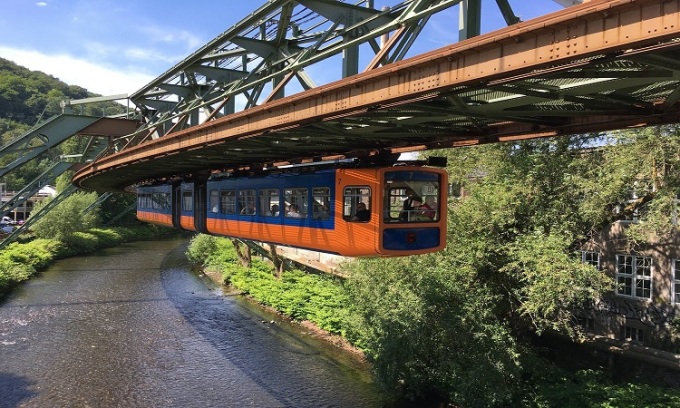
The Schwebebahn train line runs through many beautiful scenes in the city of Wuppertal. Photo: Wikipedia
If ever there was a railway that was perfectly suited to its environment, it would be the legendary Schwebebahn suspension railway in Germany’s North Rhine-Westphalia region. Built to connect several industrial towns along the winding Wupper River valley, the monorail was completed in 1901 and helped lead to the founding of the city of Wuppertal in 1929.
For Wuppertal residents, the railway is the core of the city's transport network, soaring 12.1 metres above the congested streets to provide a fast and direct journey along a route of nearly 13 kilometres. The monorail propels the trains, supported by a series of 486 steel gates weighing a total of nearly 20,000 tonnes. More than 80,000 people a day travel on the 31 modern trains that travel at speeds of up to 60 kilometres per hour.
Stoosbahn, Switzerland
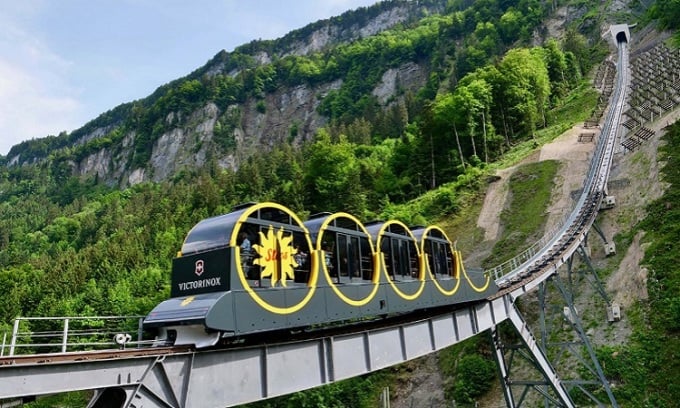
The Stoosbahn train can climb a 47.7-degree slope. Photo: Twitter
Currently holding the record for the steepest mountain train in the world , the Stoosbahn railway in Switzerland opened in December 2017. The unique cylindrical carriages rotate on their own, allowing passengers to balance and move up steep mountains of up to 47.7 degrees. In a journey of just over 1.74 km, the train travels nearly 744 m from the valley station in just 5 minutes.
The Stoosbahn carries 10,000 tons of cargo to the top of the mountain each year, mostly supplies for hotels and restaurants, and also carries trash and recyclables down. A total of 1,500 passengers can travel on the railway every hour, a 50% increase over the previous funicular. The smooth transition from flat terrain to steep mountains is very fast, and the views from the revolving cabin are excellent.
Chongqing Monorail, China
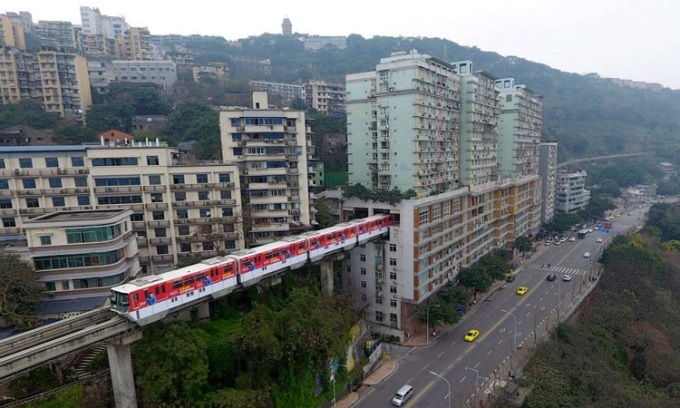
A monorail runs through an apartment building in Chongqing. Photo: My Place
Monorails have been around for more than a century. Chongqing, China, is home to the world’s longest and busiest monorail system, carrying millions of passengers a year on two high-capacity lines totaling 60 miles (98 kilometers). At nearly 34 miles (55 kilometers) long, Line 3 is the world’s longest monorail, with an annual ridership of about 250 million. Opened in 2005 and 2016, the two lines have 70 elevated and underground stations. Notably, a section of Line 2 runs right through the middle of a high-rise apartment building.
DMV Road-Rail Bus, Japan
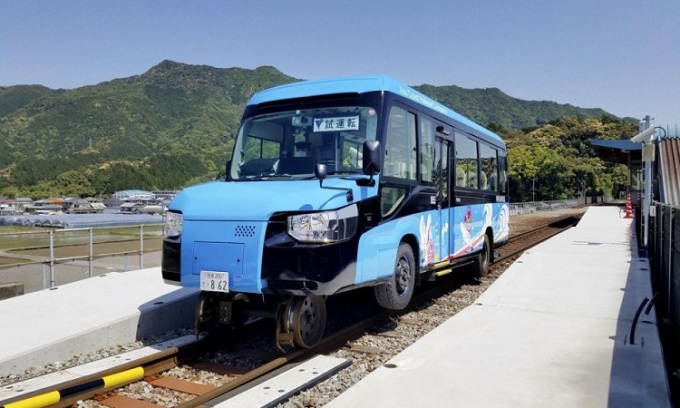
DM buses have training wheels to help them run on rails. Photo: Japan Forward
The DM Road-Rail Bus in Japan, which can carry about 20 passengers at a time, runs a 48 km route between Kaiyo Town in Tokushima and Muroto City in Kochi Prefecture. 9.7 km of the route runs on a suburban track, while the rest is run in bus mode. The DMV is a diesel-powered bus equipped with a series of train wheels that can be deployed in about 15 seconds. Lighter than conventional trains, the DMV also consumes less fuel and is cheaper to maintain.
As the “world’s first dual-mode vehicle,” the DMV was created to improve rail service and reduce costs. It also helps reach remote communities in the event of natural disasters like earthquakes that leave large sections of road or rail unusable.
An Khang (According to CNN )
Source link



![[Photo] Journalists moved to tears at the Memorial Service for the soldiers who died in Gac Ma](https://vphoto.vietnam.vn/thumb/1200x675/vietnam/resource/IMAGE/2025/5/30/9454613a55c54c16bf8c0efa51883456)

![[Photo] National Conference "100 years of Vietnamese Revolutionary Press accompanying the glorious cause of the Party and the nation"](https://vphoto.vietnam.vn/thumb/1200x675/vietnam/resource/IMAGE/2025/5/30/1cf6cd5c8a934ebfa347028dcb08358c)
![[Photo] A delegation of 100 journalists from the Vietnam Journalists Association visits the soldiers and people of Truong Sa island district.](https://vphoto.vietnam.vn/thumb/1200x675/vietnam/resource/IMAGE/2025/5/30/0984a986227d4e988177f560d2e1563e)
![[Photo] General Secretary To Lam receives Chief of the Central Office of the Lao People's Revolutionary Party](https://vphoto.vietnam.vn/thumb/1200x675/vietnam/resource/IMAGE/2025/5/30/140435f4b39d4599a3d17975dfb444c5)


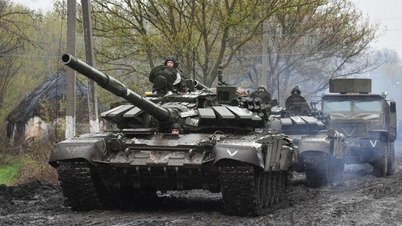
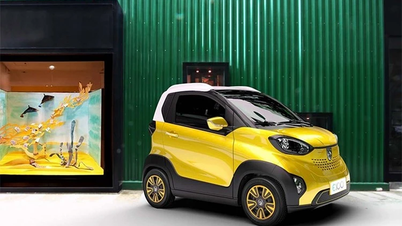

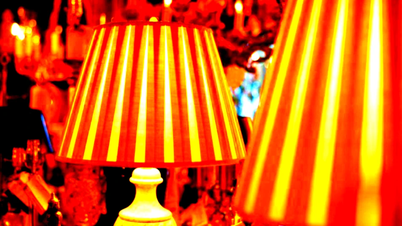























































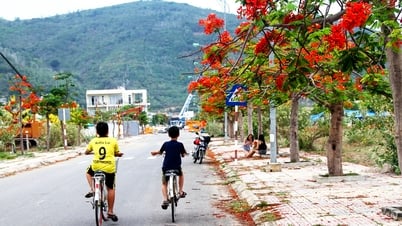



















Comment (0)